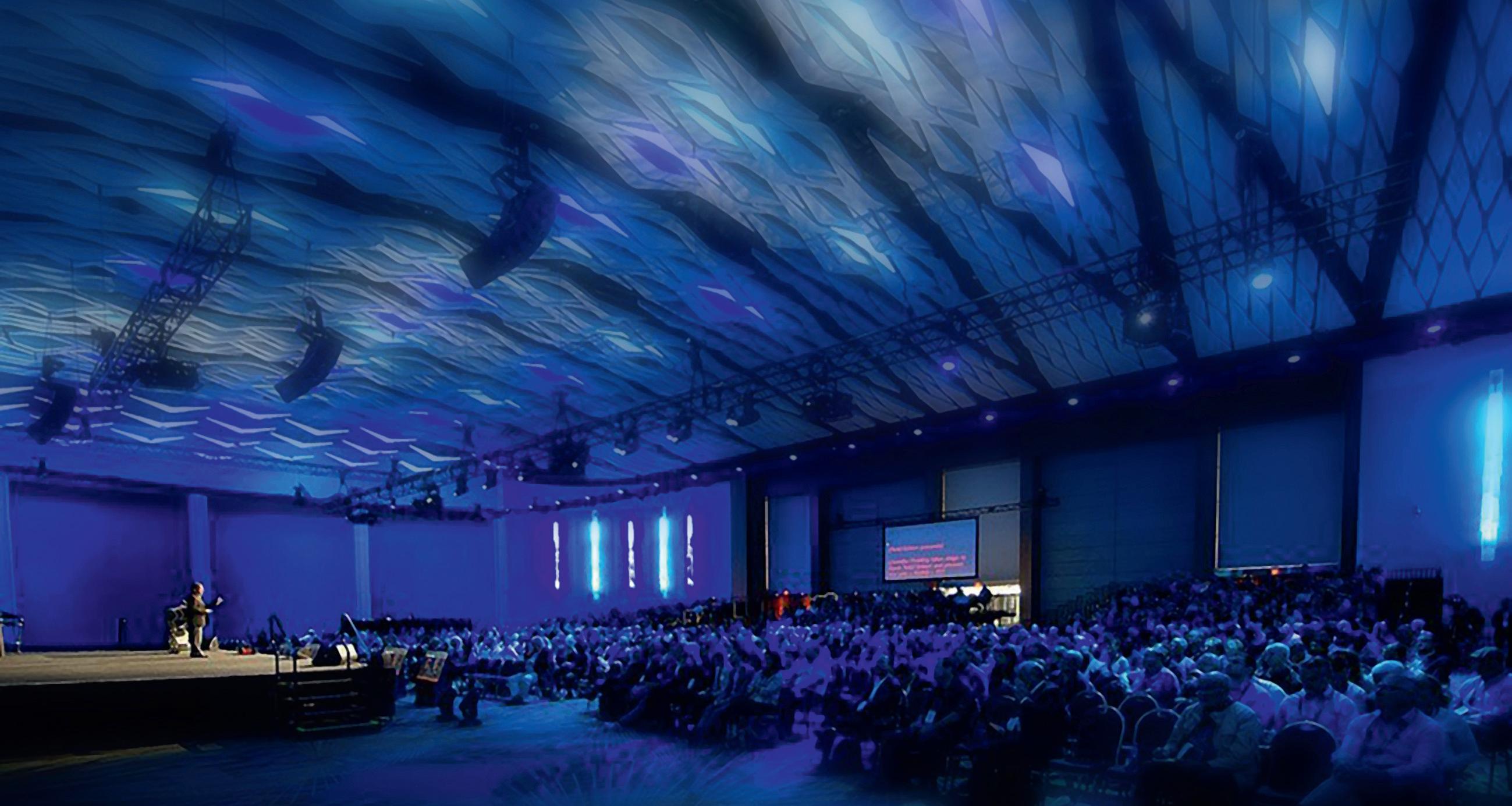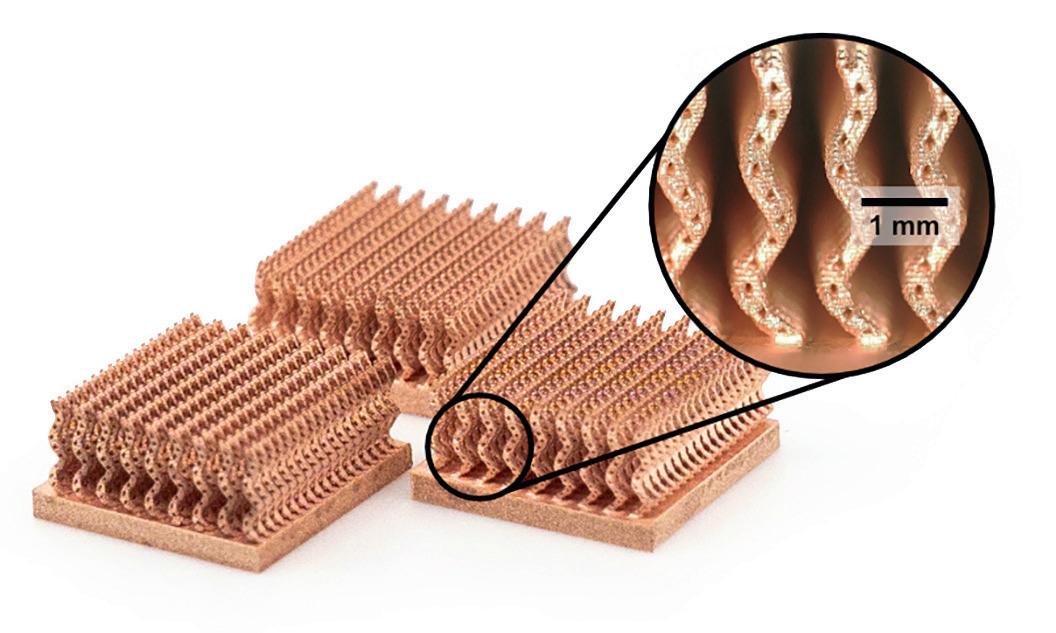
3 minute read
Art to Heart
John, who heads The Barnes Global Advisors and Metal Powder Works, has been involved in metal additive manufacturing throughout a distinguished career. He’s led teams that qualified the aerospace industry’s first series production metal AM parts, and developed a pilot metal production facility.

As senior manager of Ricoh’s Healthcare Center of Excellence, Sarah is developing a curriculum for the company’s Learning Institute that focuses on medical managed
Unless you’re stuck on the I-805 during rush hour and happen to glance eastward, you might not notice the place. But any area resident who has had a sick child knows the way there quite well. According to its website, Rady Children’s Hospital-San Diego is the largest children’s hospital on the West Coast, the only facility in the area dedicated exclusively to pediatric health care, and the region’s only designated pediatric trauma center.
It’s also where Justin Ryan, PhD spends his days trying to improve the already exemplary level of care that more nearly 1,000 middle and high school students to RAPID + TCT. There also was a special networking lunch for young professionals and a Career Forum Panel. The initiative is led by Ellen Lee and Jennifer Coyne, who are both advisors on the Additive Manufacturing Technical Community Leadership Committee. than 281,000 children have received since the hospital’s founding in 1954.
SME Media also interviewed dozens of AM leaders during RAPID + TCT as part of its Voices AMplified initiative that showcases the people behind the technology. This month’s Voices AMplified report profiles two such visionaries: Olga Ivanova and Carl Dekker. Known as “Dr. O,” Olga has worked on innovative projects for the medical and defense industries, and is a tireless crusader for advancing AM.
Carl puts the emphasis on people. He leads a talented team at Met-L-Flo, which produces a wide range of 3D-printed products. He also chairs the Direct Digital Manufacturing Advisory Team and moderated a panel at RAPID + TCT.
Building Foundations
Carl and Olga represent the spirit behind Voices AMplified. I hope you enjoy their stories.
Ryan is a research scientist and director of the Helen and Will Webster Foundation 3D Innovations (3DI) Lab. Don’t thank him for introducing the hospital to additive manufacturing (AM), though. Those accolades go to pediatric cardiologist Dr. Sanjeet Hegde and cardiothoracic surgeon Dr. John J. Lamberti, who laid the groundwork for 3DI by using cardiac scans to generate digital datasets of young patient’s hearts, then working with external service providers to 3D print physical models. Simultaneous to these endeavors, the orthopedic program was also using an extrusion-style desktop 3D printer for research and surgical planning.
Although their movie counterparts possess awesome superpowers, the 3D-printed Baby Yodas (at left) and Groots (right) that Olga Ivanova gave to visiting high school students are unable to do so much as dissipate electrical charge--but they’re still very popular with the kids.
Ryan entered the picture soon after, when Rady Children’s formalized its 3D-printing pursuits in the spring of 2018 and put him in charge of the newly formed department. He was also there when 3DI received “a significant grant” from the Helen and Will Webster Foundation one year later, allowing him to hire Parham Gholami, a software engineer with extensive experience in video game development.
What do video games have to do with the printing of patient-specific models that allow physicians to practice upcoming procedures, and better visualize the internal workings of their small patients? Quite a bit, according to Ryan.
“I wanted to make it easier for people with limited computer experience to visualize and interact with the complex three-dimensional datasets that any radiology lab produces,” said Ryan. “Who better to accomplish that than someone who develops virtual reality software?”
Aiming Small
which are often too large for young patients or have not been optimized for their faster blood flow and relatively soft bones. And from a larger perspective, 3DI Lab’s work benefits the medical industry as a whole by bringing together huge amounts of patient data that can be used to research diseases, genetic defects, and other life-threatening abnormalities, and then develop the most effective treatment options.
“It’s a challenging aspect of the business that there are a lot more sick adults than sick kids, so that means medical devices and therapies are often focused on this larger [adult] market segment,” Ryan said. “So one of our goals is to make it easier for medical device companies to get into the pediatric space and develop critical solutions for what is clearly a much smaller customer base. It’s a challenging business model, but if we can help them leapfrog the status quo by utilizing 3D datasets and 3D-printed models, we will ultimately bring more medical devices to the pediatric domain.”
The Big Picture
According to Ryan, 3D printing is only part of what he and his team do, and in some ways, it’s not even their primary focus. “We take a holistic approach to this technology, and that includes a strong emphasis on applications that leverage the three-dimensional datasets created through CT and MRI imaging. This was a big part of why I hired Parham.”










